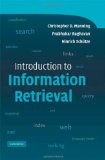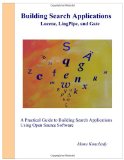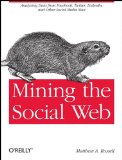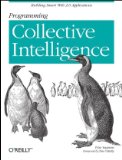http://solr-vs-elasticsearch.com/
Apache Solr vs Elasticsearch
The Feature Smackdown
API
| Feature | Solr 6.2.1 | ElasticSearch 5.0 |
|---|
| Format |
XML, CSV, JSON |
JSON |
| HTTP REST API |
 |
 |
Binary API  |
 SolrJ SolrJ |
 TransportClient, Thrift (through a plugin) TransportClient, Thrift (through a plugin) |
| JMX support |
 |
 ES specific stats are exposed through the REST API ES specific stats are exposed through the REST API |
Official client libraries  |
Java |
Java, Groovy, PHP, Ruby, Perl, Python, .NET, Javascript Official list of clients |
Community client libraries  |
PHP, Ruby, Perl, Scala, Python, .NET, Javascript, Go, Erlang, Clojure |
Clojure, Cold Fusion, Erlang, Go, Groovy, Haskell, Java, JavaScript, .NET, OCaml, Perl, PHP, Python, R, Ruby, Scala, Smalltalk, Vert.x Complete list |
3rd-party product integration (open-source) |
Drupal, Magento, Django, ColdFusion, Wordpress, OpenCMS, Plone, Typo3, ez Publish, Symfony2, Riak (via Yokozuna) |
Drupal, Django, Symfony2, Wordpress, CouchBase |
3rd-party product integration (commercial) |
DataStax Enterprise Search, Cloudera Search, Hortonworks Data Platform, MapR |
SearchBlox, Hortonworks Data Platform, MapR etc Complete list |
Output |
JSON, XML, PHP, Python, Ruby, CSV, Velocity, XSLT, native Java |
JSON, XML/HTML (via plugin) |
Infrastructure
| Feature | Solr 6.2.1 | ElasticSearch 5.0 |
|---|
| Master-slave replication |
 Only in non-SolrCloud. In SolrCloud, behaves identically to ES. Only in non-SolrCloud. In SolrCloud, behaves identically to ES. |
 Not an issue because shards are replicated across nodes. Not an issue because shards are replicated across nodes. |
| Integrated snapshot and restore |
Filesystem |
Filesystem, AWS Cloud Plugin for S3 repositories, HDFS Plugin for Hadoop environments, Azure Cloud Plugin for Azure storage repositories |
Indexing
| Feature | Solr 6.2.1 | ElasticSearch 5.0 |
|---|
| Data Import |
DataImportHandler - JDBC, CSV, XML, Tika, URL, Flat File |
[DEPRECATED in 2.x] Rivers modules - ActiveMQ, Amazon SQS, CouchDB, Dropbox, DynamoDB, FileSystem, Git, GitHub, Hazelcast, JDBC, JMS, Kafka, LDAP, MongoDB, neo4j, OAI, RabbitMQ, Redis, RSS, Sofa, Solr, St9, Subversion, Twitter, Wikipedia |
| ID field for updates and deduplication |
 |
 |
DocValues  |
 |
 |
Partial Doc Updates  |
 with stored fields with stored fields |
 with _source field with _source field |
Custom Analyzers and Tokenizers  |
 |
 |
Per-field analyzer chain  |
 |
 |
Per-doc/query analyzer chain  |
 |
 |
Index-time synonyms  |
 |
 Supports Solr and Wordnet synonym format Supports Solr and Wordnet synonym format |
Query-time synonyms  |
 especially via hon-lucene-synonyms especially via hon-lucene-synonyms |
 Technically, yes, but practically no because multi-word/phrase query-time synonyms are not supported. See ES docs and hon-lucene-synonyms blog for nuances. Technically, yes, but practically no because multi-word/phrase query-time synonyms are not supported. See ES docs and hon-lucene-synonyms blog for nuances. |
Multiple indexes  |
 |
 |
Near-Realtime Search/Indexing  |
 |
 |
Complex documents  |
 |
 |
Schemaless  |
 4.4+ 4.4+ |
 |
Multiple document types per schema  |
 One set of fields per schema, one schema per core One set of fields per schema, one schema per core |
 |
Online schema changes  |
 Schemaless mode or via dynamic fields. Schemaless mode or via dynamic fields. |
 Only backward-compatible changes. Only backward-compatible changes. |
Apache Tika integration  |
 |
 |
Dynamic fields  |
 |
 |
Field copying  |
 |
 via multi-fields via multi-fields |
Hash-based deduplication  |
 |
 Murmur plugin or ER plugin Murmur plugin or ER plugin |
Searching
| Feature | Solr 6.2.1 | ElasticSearch 5.0 |
|---|
Lucene Query parsing  |
 |
 |
Structured Query DSL  |
 Need to programmatically create queries if going beyond Lucene query syntax. Need to programmatically create queries if going beyond Lucene query syntax. |
 |
Span queries  |
 via SOLR-2703 via SOLR-2703 |
 |
Spatial/geo search  |
 |
 |
Multi-point spatial search  |
 |
 |
Faceting  |
 |
 Top N term accuracy can be controlled with shard_size Top N term accuracy can be controlled with shard_size |
Advanced Faceting  |
 New JSON faceting API as of Solr 5.x New JSON faceting API as of Solr 5.x |
 blog post blog post |
| Geo-distance Faceting |
 |
 |
Pivot Facets  |
 |
 |
| More Like This |
 |
 |
Boosting by functions  |
 |
 |
Boosting using scripting languages  |
 |
 |
Push Queries  |
 JIRA issue JIRA issue |
 Percolation. Distributed percolation supported in 1.0 Percolation. Distributed percolation supported in 1.0 |
Field collapsing/Results grouping  |
 |
 |
Query Re-Ranking  |
 |
 via Rescoring or a plugin via Rescoring or a plugin |
Index-based Spellcheck  |
 |
 Phrase Suggester Phrase Suggester |
Wordlist-based Spellcheck  |
 |
 |
| Autocomplete |
 |
 |
Query elevation  |
 |
 workaround workaround |
Intra-index joins  |
 via parent-child query via parent-child query |
 via has_children and top_children queries via has_children and top_children queries |
Inter-index joins  |
 Joined index has to be single-shard and replicated across all nodes. Joined index has to be single-shard and replicated across all nodes. |
 |
Resultset Scrolling  |
 New to 4.7.0 New to 4.7.0 |
 via scan search type via scan search type |
Filter queries  |
 |
 also supports filtering by native scripts also supports filtering by native scripts |
Filter execution order  |
 local params and cache property local params and cache property |
 |
Alternative QueryParsers  |
 DisMax, eDisMax DisMax, eDisMax |
 query_string, dis_max, match, multi_match etc query_string, dis_max, match, multi_match etc |
Negative boosting  |
 but awkward. Involves positively boosting the inverse set of negatively-boosted documents. but awkward. Involves positively boosting the inverse set of negatively-boosted documents. |
 |
| Search across multiple indexes |
 it can search across multiple compatible collections it can search across multiple compatible collections |
 |
| Result highlighting |
 |
 |
Custom Similarity  |
 |
 |
Searcher warming on index reload  |
 |
 Warmers API Warmers API |
| Term Vectors API |
 |
 |
Customizability
| Feature | Solr 6.2.1 | ElasticSearch 5.0 |
|---|
Pluggable API endpoints  |
 |
 |
Pluggable search workflow  |
 via SearchComponents via SearchComponents |
 |
Pluggable update workflow  |
 via UpdateRequestProcessor via UpdateRequestProcessor |
 |
| Pluggable Analyzers/Tokenizers |
 |
 |
Pluggable QueryParsers  |
 |
 |
| Pluggable Field Types |
 |
 |
| Pluggable Function queries |
 |
 |
| Pluggable scoring scripts |
 |
 |
Pluggable hashing  |
 |
 |
Pluggable webapps  |
 |
 [site plugins DEPRECATED in 5.x] blog post [site plugins DEPRECATED in 5.x] blog post |
Automated plugin installation  |
 |
 Installable from GitHub, maven, sonatype or elasticsearch.org Installable from GitHub, maven, sonatype or elasticsearch.org |
Distributed
| Feature | Solr 6.2.1 | ElasticSearch 5.0 |
|---|
Self-contained cluster  |
 Depends on separate ZooKeeper server Depends on separate ZooKeeper server |
 Only Elasticsearch nodes Only Elasticsearch nodes |
| Automatic node discovery |
 ZooKeeper ZooKeeper |
 internal Zen Discovery or ZooKeeper internal Zen Discovery or ZooKeeper |
| Partition tolerance |
 The partition without a ZooKeeper quorum will stop accepting indexing requests or cluster state changes, while the partition with a quorum continues to function. The partition without a ZooKeeper quorum will stop accepting indexing requests or cluster state changes, while the partition with a quorum continues to function. |
 Partitioned clusters can diverge unless discovery.zen.minimum_master_nodes set to at least N/2+1, where N is the size of the cluster. If configured correctly, the partition without a quorum will stop operating, while the other continues to work. See this Partitioned clusters can diverge unless discovery.zen.minimum_master_nodes set to at least N/2+1, where N is the size of the cluster. If configured correctly, the partition without a quorum will stop operating, while the other continues to work. See this |
| Automatic failover |
 If all nodes storing a shard and its replicas fail, client requests will fail, unless requests are made with the shards.tolerant=true parameter, in which case partial results are retuned from the available shards. If all nodes storing a shard and its replicas fail, client requests will fail, unless requests are made with the shards.tolerant=true parameter, in which case partial results are retuned from the available shards. |
 |
| Automatic leader election |
 |
 |
| Shard replication |
 |
 |
Sharding  |
 |
 |
Automatic shard rebalancing  |
 |
 it can be machine, rack, availability zone, and/or data center aware. Arbitrary tags can be assigned to nodes and it can be configured to not assign the same shard and its replicates on a node with the same tags. it can be machine, rack, availability zone, and/or data center aware. Arbitrary tags can be assigned to nodes and it can be configured to not assign the same shard and its replicates on a node with the same tags. |
| Change # of shards |
 Shards can be added (when using implicit routing) or split (when using compositeId). Cannot be lowered. Replicas can be increased anytime. Shards can be added (when using implicit routing) or split (when using compositeId). Cannot be lowered. Replicas can be increased anytime. |
 each index has 5 shards by default. Number of primary shards cannot be changed once the index is created. Replicas can be increased anytime. each index has 5 shards by default. Number of primary shards cannot be changed once the index is created. Replicas can be increased anytime. |
| Shard splitting |
 |
 |
Relocate shards and replicas  |
 can be done by creating a shard replicate on the desired node and then removing the shard from the source node can be done by creating a shard replicate on the desired node and then removing the shard from the source node |
 can move shards and replicas to any node in the cluster on demand can move shards and replicas to any node in the cluster on demand |
Control shard routing  |
 shards or _route_ parameter shards or _route_ parameter |
 routing parameter routing parameter |
| Pluggable shard/replica assignment |
 Rule-based replica assignment Rule-based replica assignment |
 Probabilistic shard balancing with Tempest plugin Probabilistic shard balancing with Tempest plugin |
| Consistency |
Indexing requests are synchronous with replication. A indexing request won't return until all replicas respond. No check for downed replicas. They will catch up when they recover. When new replicas are added, they won't start accepting and responding to requests until they are finished replicating the index. |
Replication between nodes is synchronous by default, thus ES is consistent by default, but it can be set to asynchronous on a per document indexing basis. Index writes can be configured to fail is there are not sufficient active shard replicas. The default is quorum, but all or one are also available. |
Misc
| Feature | Solr 6.2.1 | ElasticSearch 5.0 |
|---|
| Web Admin interface |
 bundled with Solr bundled with Solr |
 Marvel or Kibana apps Marvel or Kibana apps |
| Visualisation |
Banana (Port of Kibana) |
Kibana |
| Hosting providers |
WebSolr, Searchify, Hosted-Solr, IndexDepot, OpenSolr, gotosolr |
Found, ObjectRocket, bonsai.io, Indexisto, qbox.io, IndexDepot, Compose.io, Sematext Logsene |
Thoughts...
I'm embedding my answer to this "Solr-vs-Elasticsearch" Quora question verbatim here:
1. Elasticsearch was born in the age of REST APIs. If you love REST APIs, you'll probably feel more at home with ES from the get-go. I don't actually think it's 'cleaner' or 'easier to use', but just that it is more aligned with web 2.0 developers' mindsets.
2. Elasticsearch's Query DSL syntax is really flexible and it's pretty easy to write complex queries with it, though it does border on being verbose. Solr doesn't have an equivalent, last I checked. Having said that, I've never found Solr's query syntax wanting, and I've always been able to easily write a custom SearchComponent if needed (more on this later).
3. I find Elasticsearch's documentation to be pretty awful. It doesn't help that some examples in the documentation are written in YAML and others in JSON. I wrote a ES code parser once to auto-generate documentation from Elasticsearch's source and found a number of discrepancies between code and what's documented on the website, not to mention a number of undocumented/alternative ways to specify the same config key.
By contrast, I've found Solr to be consistent and really well-documented. I've found pretty much everything I've wanted to know about querying and updating indices without having to dig into code much. Solr's schema.xml and solrconfig.xml are *extensively* documented with most if not all commonly used configurations.
4. Whilst what Rick says about ES being mostly ready to go out-of-box is true, I think that is also a possible problem with ES. Many users don't take the time to do the most simple config (e.g. type mapping) of ES because it 'just works' in dev, and end up running into issues in production.
And once you do have to do config, then I personally prefer Solr's config system over ES'. Long JSON config files can get overwhelming because of the JSON's lack of support for comments. Yes you can use YAML, but it's annoying and confusing to go back and forth between YAML and JSON.
5. If your own app works/thinks in JSON, then without a doubt go for ES because ES thinks in JSON too. Solr merely supports it as an afterthought. ES has a number of nice JSON-related features such as parent-child and nested docs that makes it a very natural fit. Parent-child joins are awkward in Solr, and I don't think there's a Solr equivalent for ES Inner hits.
6. ES doesn't require ZooKeeper for it's 'elastic' features which is nice coz I personally find ZK unpleasant, but as a result, ES does have issues with split-brain scenarios though (google 'elasticsearch split-brain' or see this: Elasticsearch Resiliency Status).
7. Overall from working with clients as a Solr/Elasticsearch consultant, I've found that developer preferences tend to end up along language party lines: if you're a Java/c# developer, you'll be pretty happy with Solr. If you live in Javascript or Ruby, you'll probably love Elasticsearch. If you're on Python or PHP, you'll probably be fine with either.
Something to add about this: ES doesn't have a very elegant Java API IMHO (you'll basically end up using REST because it's less painful), whereas Solrj is very satisfactory and more efficient than Solr's REST API. If you're primarily a Java dev team, do take this into consideration for your sanity. There's no scenario in which constructing JSON in Java is fun/simple, whereas in Python its absolutely pain-free, and believe me, if you have a non-trivial app, your ES json query strings will be works of art.
8. ES doesn't have in-built support for pluggable 'SearchComponents', to use Solr's terminology. SearchComponents are (for me) a pretty indispensable part of Solr for anyone who needs to do anything customized and in-depth with search queries.
Yes of course, in ES you can just implement your own RestHandler, but that's just not the same as being able to plug-into and rewire the way search queries are handled and parsed.
9. Whichever way you go, I highly suggest you choose a client library which is as 'close to the metal' as you can get. Both ES and Solr have *really* simple search and updating search APIs. If a client library introduces an additional DSL layer in attempt to 'simplify', I suggest you think long and hard about using it, as it's likely to complicate matters in the long-run, and make debugging and asking for help on SO more problematic.
In particular, if you're using Rails + Solr, consider using rsolr/rsolr
instead of sunspot/sunspot if you can help it. ActiveRecord is complex code and sufficiently magical. The last thing you want is more magic on top of that.
---
To conclude, ES and Solr have more or less feature-parity and from a feature standpoint, there's rarely one reason to go one way or the other (unless your app lives/breathes JSON). Performance-wise, they are also likely to be quite similar (I'm sure there are exceptions to the rule. ES' relatively new autocomplete implementation, for example, is a pretty dramatic departure from previous Lucene/Solr implementations, and I suspect it produces faster responses at scale).
ES does offer less friction from the get-go and you feel like you have something working much quicker, but I find this to be illusory. Any time gained in this stage is lost when figuring out how to properly configure ES because of poor documentation - an inevitablity when you have a non-trivial application.
Solr encourages you to understand a little more about what you're doing, and the chance of you shooting yourself in the foot is somewhat lower, mainly because you're forced to read and modify the 2 well-documented XML config files in order to have a working search app.
---
EDIT on Nov 2015:
ES has been gradually distinguishing itself from Solr when it comes to data analytics. I think it's fair to attribute this to the immense traction of the ELK stack in the logging, monitoring and analytic space. My guess is that this is where Elastic (the company) gets the majority of its revenue, so it makes perfect sense that ES (the product) reflects this.
We see this manifesting primarily in the form of aggregations, which is a more flexible and nuanced replacement for facets. Read more about aggregations here: Migrating to aggregations
Aggregations have been out for a while now (since 1.4), but with the recently released ES 2.0 comes pipeline aggregations, which let you compute aggregations such as derivatives, moving averages, and series arithmetic on the results of other aggregations. Very cool stuff, and Solr simply doesn't have an equivalent. More on pipeline aggregations here: Out of this world aggregations
If you're currently using or contemplating using Solr in an analytics app, it is worth your while to look into ES aggregation features to see if you need any of it.
Resources
- My other sites may be of interest if you're new to Lucene, Solr and Elasticsearch:
- The Solr wiki and the Elasticsearch Guide are your friends.
Contribute
If you see any mistakes, or would like to append to the information on this webpage, you can clone the GitHub repo for this site with:
git clone https://github.com/superkelvint/solr-vs-elasticsearch
and submit a pull request.
Popular books related to Search



 SolrJ
SolrJ TransportClient, Thrift (through a plugin)
TransportClient, Thrift (through a plugin)
 ES specific stats are exposed through the REST API
ES specific stats are exposed through the REST API




 Only in non-SolrCloud. In SolrCloud, behaves identically to ES.
Only in non-SolrCloud. In SolrCloud, behaves identically to ES. Not an issue because shards are replicated across nodes.
Not an issue because shards are replicated across nodes.





 with stored fields
with stored fields with _source field
with _source field










 Supports Solr and Wordnet synonym format
Supports Solr and Wordnet synonym format
 especially via hon-lucene-synonyms
especially via hon-lucene-synonyms Technically, yes, but practically no because multi-word/phrase query-time synonyms are not supported. See ES docs and hon-lucene-synonyms blog for nuances.
Technically, yes, but practically no because multi-word/phrase query-time synonyms are not supported. See ES docs and hon-lucene-synonyms blog for nuances.









 4.4+
4.4+

 One set of fields per schema, one schema per core
One set of fields per schema, one schema per core

 Schemaless mode or via dynamic fields.
Schemaless mode or via dynamic fields. Only backward-compatible changes.
Only backward-compatible changes.







 via multi-fields
via multi-fields

 Murmur plugin or ER plugin
Murmur plugin or ER plugin



 Need to programmatically create queries if going beyond Lucene query syntax.
Need to programmatically create queries if going beyond Lucene query syntax.

 via SOLR-2703
via SOLR-2703








 Top N term accuracy can be controlled with shard_size
Top N term accuracy can be controlled with shard_size
 New JSON faceting API as of Solr 5.x
New JSON faceting API as of Solr 5.x blog post
blog post













 JIRA issue
JIRA issue Percolation. Distributed percolation supported in 1.0
Percolation. Distributed percolation supported in 1.0




 via Rescoring or a plugin
via Rescoring or a plugin

 Phrase Suggester
Phrase Suggester






 workaround
workaround
 via parent-child query
via parent-child query via has_children and top_children queries
via has_children and top_children queries
 Joined index has to be single-shard and replicated across all nodes.
Joined index has to be single-shard and replicated across all nodes.

 New to 4.7.0
New to 4.7.0 via scan search type
via scan search type

 also supports filtering by native scripts
also supports filtering by native scripts
 local params and cache property
local params and cache property

 DisMax, eDisMax
DisMax, eDisMax query_string, dis_max, match, multi_match etc
query_string, dis_max, match, multi_match etc
 but awkward. Involves positively boosting the inverse set of negatively-boosted documents.
but awkward. Involves positively boosting the inverse set of negatively-boosted documents.
 it can search across multiple compatible collections
it can search across multiple compatible collections







 Warmers API
Warmers API





 via SearchComponents
via SearchComponents

 via UpdateRequestProcessor
via UpdateRequestProcessor
















 [site plugins DEPRECATED in 5.x] blog post
[site plugins DEPRECATED in 5.x] blog post

 Installable from GitHub, maven, sonatype or elasticsearch.org
Installable from GitHub, maven, sonatype or elasticsearch.org
 Depends on separate ZooKeeper server
Depends on separate ZooKeeper server Only Elasticsearch nodes
Only Elasticsearch nodes ZooKeeper
ZooKeeper internal Zen Discovery or ZooKeeper
internal Zen Discovery or ZooKeeper The partition without a ZooKeeper quorum will stop accepting indexing requests or cluster state changes, while the partition with a quorum continues to function.
The partition without a ZooKeeper quorum will stop accepting indexing requests or cluster state changes, while the partition with a quorum continues to function. Partitioned clusters can diverge unless discovery.zen.minimum_master_nodes set to at least N/2+1, where N is the size of the cluster. If configured correctly, the partition without a quorum will stop operating, while the other continues to work. See this
Partitioned clusters can diverge unless discovery.zen.minimum_master_nodes set to at least N/2+1, where N is the size of the cluster. If configured correctly, the partition without a quorum will stop operating, while the other continues to work. See this If all nodes storing a shard and its replicas fail, client requests will fail, unless requests are made with the shards.tolerant=true parameter, in which case partial results are retuned from the available shards.
If all nodes storing a shard and its replicas fail, client requests will fail, unless requests are made with the shards.tolerant=true parameter, in which case partial results are retuned from the available shards.









 it can be machine, rack, availability zone, and/or data center aware. Arbitrary tags can be assigned to nodes and it can be configured to not assign the same shard and its replicates on a node with the same tags.
it can be machine, rack, availability zone, and/or data center aware. Arbitrary tags can be assigned to nodes and it can be configured to not assign the same shard and its replicates on a node with the same tags. Shards can be added (when using implicit routing) or split (when using compositeId). Cannot be lowered. Replicas can be increased anytime.
Shards can be added (when using implicit routing) or split (when using compositeId). Cannot be lowered. Replicas can be increased anytime. each index has 5 shards by default. Number of primary shards cannot be changed once the index is created. Replicas can be increased anytime.
each index has 5 shards by default. Number of primary shards cannot be changed once the index is created. Replicas can be increased anytime.


 can be done by creating a shard replicate on the desired node and then removing the shard from the source node
can be done by creating a shard replicate on the desired node and then removing the shard from the source node can move shards and replicas to any node in the cluster on demand
can move shards and replicas to any node in the cluster on demand
 shards or _route_ parameter
shards or _route_ parameter routing parameter
routing parameter Rule-based replica assignment
Rule-based replica assignment Probabilistic shard balancing with Tempest plugin
Probabilistic shard balancing with Tempest plugin bundled with Solr
bundled with Solr Marvel or Kibana apps
Marvel or Kibana apps










